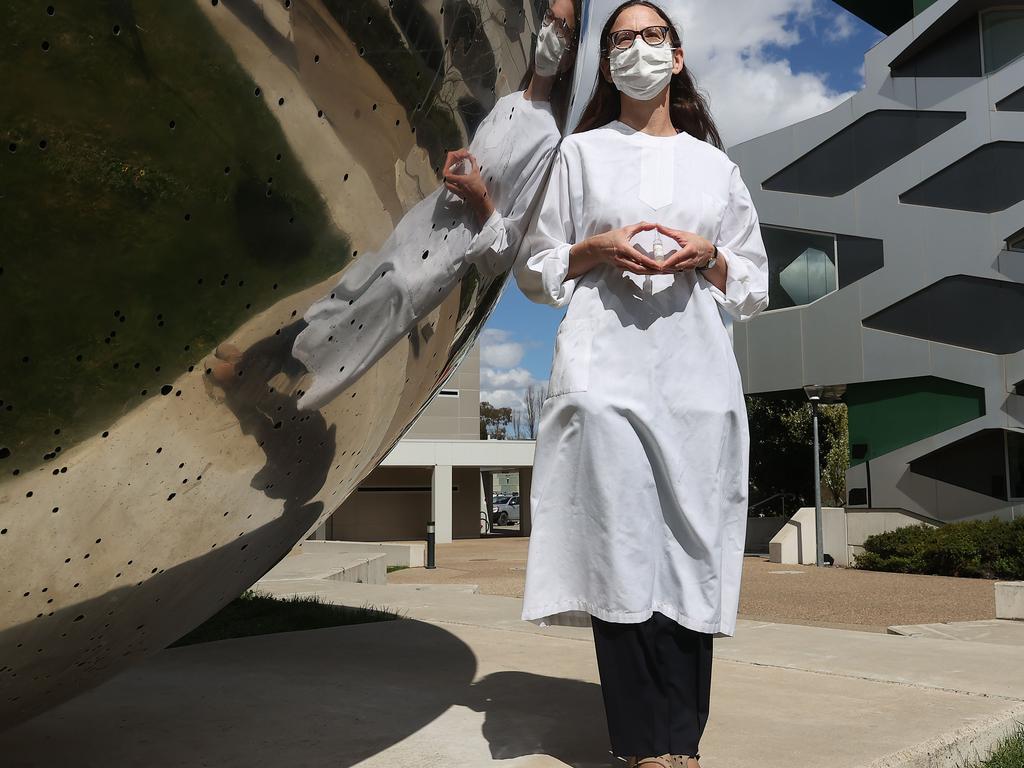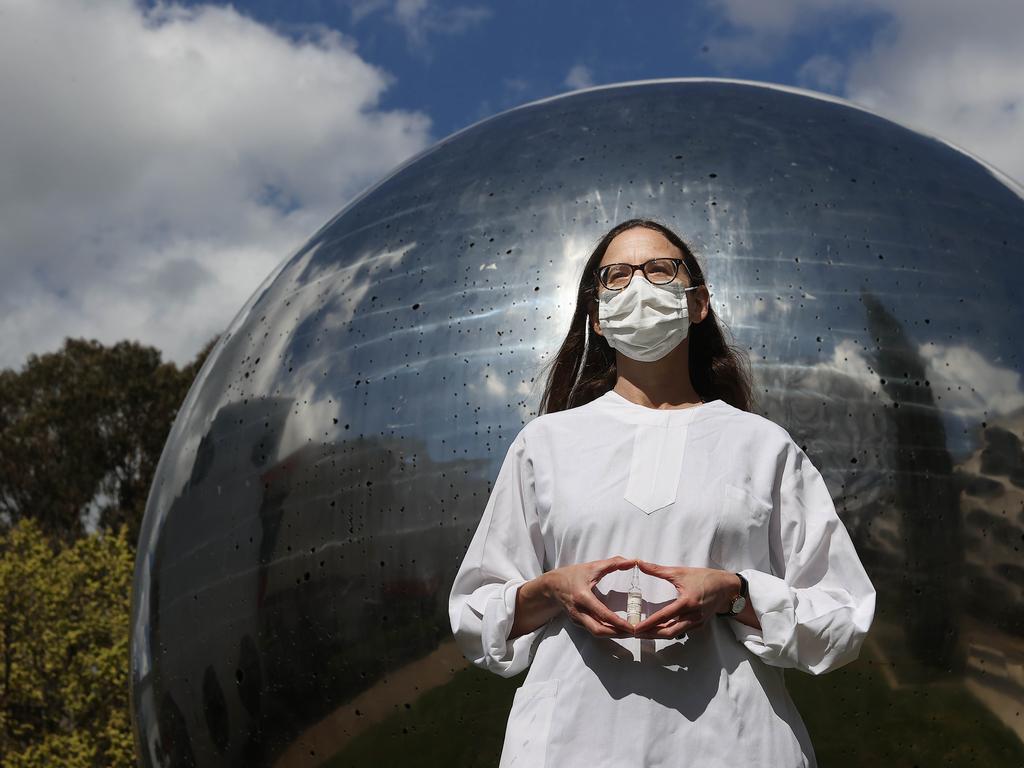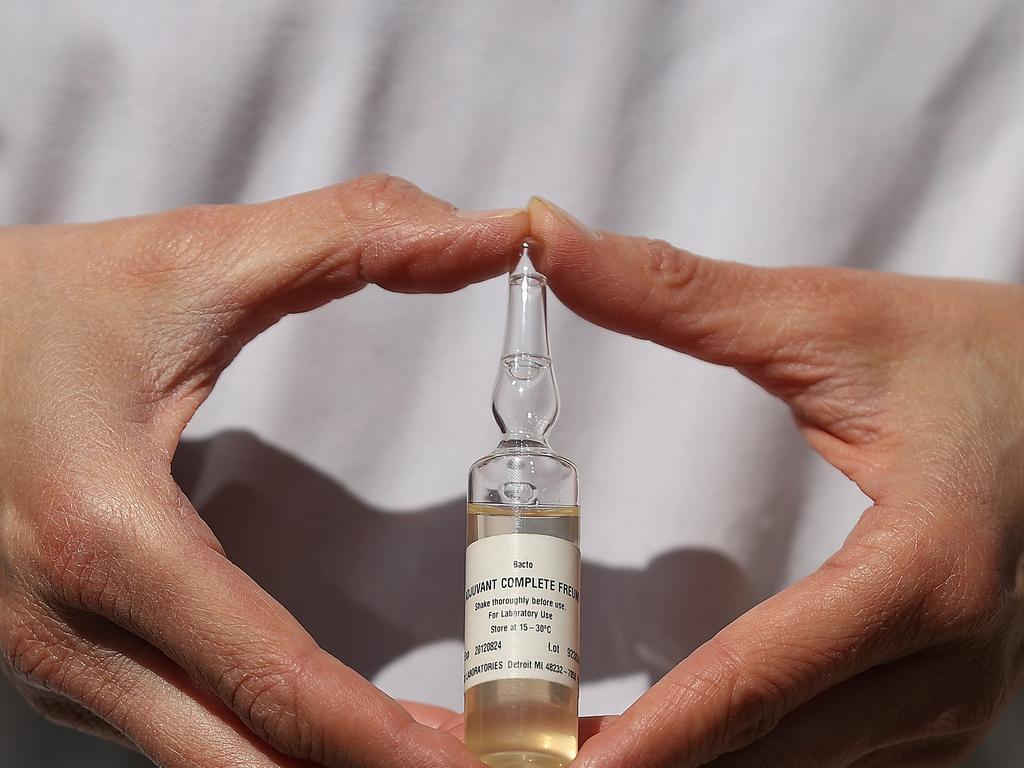Scientists discover potential cancer treatment that has less side effects than chemotherapy
Aussie scientists have made a game-changing discovery about a potential way to treat cancer that could be a low-cost and non-toxic alternative to chemo.
A game-changing low-cost and non-toxic treatment could offer people battling cancer a new alternative to chemotherapy.
Researchers at The Australian National University have discovered a way to use dead bacteria to help kickstart the body’s immune system and shrink the cancer.
Lead ANU researcher Aude Fahrer said an ongoing clinical trial of the Complete Freund Adjuvant treatment had shown promising results and could significantly improve outcomes for patients battling the disease.
“We do think it could be a game changer. If this works well, it will be a new treatment option with far fewer side effects, which will be available for cancer patients,” Associate Professor Fahrer said.
Complete Freund Adjuvant is made up just three ingredients: mineral oil, surfactant and dead bacteria.
Associate Professor Fahrer’s team tested the treatment on eight cancer patients at the Canberra Hospital.
“They were all late-stage patients, but in one case in particular we were able to significantly improve the patients' quality of life,” she said.
The new treatment was able to reduce the amount of liquid around the patient's lungs and shrunk their tumour.

Associate Professor Fahrer said the new approach was less time-consuming and physically taxing than other cancer treatments such as chemotherapy.
“The best things about this new treatment is that it requires few dosages, is simple to administer, and has low side effects,” she said.
Extreme hair loss, nausea, fatigue, and physical pain are just some of the impacts of chemotherapy.
And while some cancer immunotherapy treatments can cost up to $40,000, the ANU researcher’s new treatment is very affordable – clocking in at just $20 per dose.

The bacterial-based immunotherapy is a simple, but unusual approach to treating tumours.
“It involves injecting a slow-release solution of dead mycobacteria directly into the cancer,” Associate Professor Fahrer said.
“The idea is this will bring immune cells into the cancer to attack the bacteria, even though they're dead, and as a side effect cause the immune cells to attack the cancer as well.
“Once the immune cells multiply they can travel around the body, so it would not only attack the cancer at the injection site, but any metastases – where the cancer has spread to another part of the body.”
While trials have only been conducted on late-stage human cancer patients so far, Associate Professor Fahrer said the new treatment was able to completely eliminate some earlier stage tumours in animal studies.

If the new treatment continues to show success in clinical trials, researchers say the treatment has the potential to help treat all forms of solid tumour cancer.
Ms Fahrer’s research was largely funded by the Lea Chapuis Memorial Fund, a cancer patient who’s dying wish was to improve treatment options for sick Australians.
“Lea asked people to contribute to the research in lieu of flowers when she passed away,” Associate Professor Fahrer said.
A second clinical trial of the new treatment at the Canberra Hospital has already been approved.



